Cherry Kush
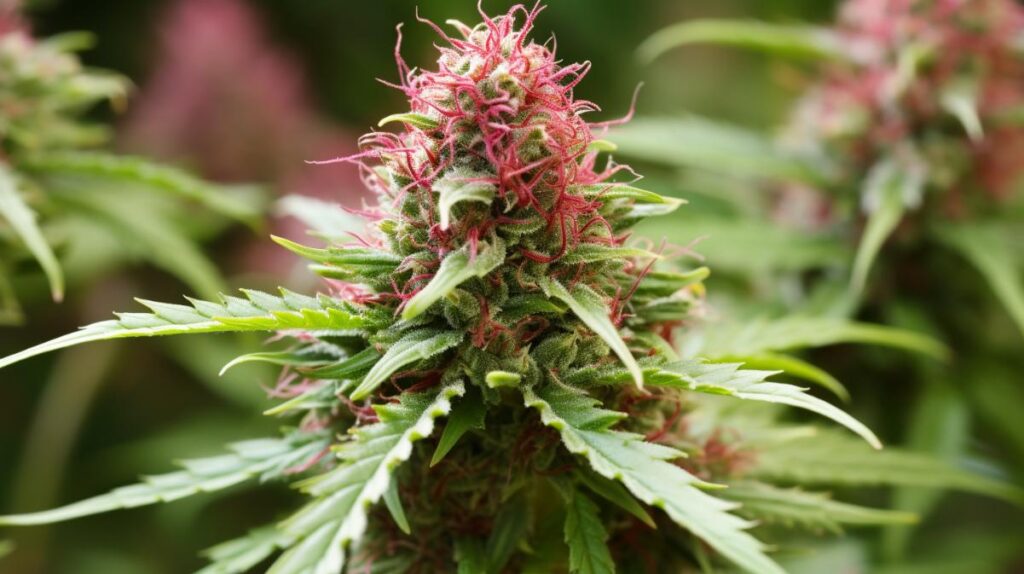
In the diverse world of cannabis strains, Cherry Kush has carved out a reputation as a palatable and potent hybrid, offering a unique balance of indica relaxation and sativa-like cerebral stimulation. Its genetic lineage, a combination of Purple Afghani and OG Kush, provides a rich tapestry of effects that have garnered attention from both recreational and medicinal users.
Characterized by its sweet cherry aroma and complex terpene profile, Cherry Kush’s nuanced bouquet underpins its popularity among connoisseurs. However, it is the strain’s purported therapeutic benefits, particularly for mood disorders and stress, that have sparked a broader conversation within the medical community.
As we consider the multifaceted nature of Cherry Kush, from its THC/CBD content to its potential medical applications, one must also be cognizant of the adverse effects that accompany its use. Thus, a comprehensive examination of this strain necessitates a closer look at not only its pleasurable attributes but also its place in the ongoing discourse surrounding cannabis legalization and its implications for health and society.
Genetic Lineage
The genetic lineage of Cherry Kush is a testament to the meticulous breeding practices of cannabis cultivators. It combines the robust genetics of OG Kush with a select phenotype of Afghani to create a strain that is potent and aromatic.
This deliberate cross between OG Kush and Purple Afghani has yielded a unique composite that leverages the formidable legacy of its parent strains. OG Kush, a cornerstone in the cannabis breeding community, imparts its renowned potency and complex terpene profile. It is marked by an earthy, piney scent with citrus undertones.
In adding the genetic influence of a carefully chosen Purple Afghani variant, breeders have introduced a dimension of sweetness and rich fruitiness to the mix. This culminates in Cherry Kush’s distinctive cherry aroma and flavor.
Analyzing the phenotypical characteristics of Cherry Kush reveals an indica-dominant hybrid structure. It presents dark green buds interlaced with vibrant orange pistils—a visual cue of its Afghani ancestry. The sedative effects synonymous with this strain correlate with its indica-leaning genetic composition. The uplifting euphoria can be attributed to the balanced contribution of its OG Kush heritage.
With THC levels averaging between 16% and 20%, Cherry Kush’s genetic profile is finely tuned for a full-bodied, yet cerebrally engaging experience.
THC/CBD Content
Cherry Kush’s cannabinoid profile is distinguished by its high THC concentration, typically ranging from 16% to 20%, and a comparatively low CBD content, catering to users seeking a pronounced psychoactive effect. The THC levels in Cherry Kush place it above average in terms of potency, which is a significant factor for those desiring an intense cerebral high accompanied by physical relaxation. The low presence of CBD does little to counterbalance the force of the THC, thus amplifying the strain’s psychoactive influence.
Analyzing its cannabinoid composition, Cherry Kush emerges as a strain better suited for recreational use rather than for therapeutic purposes, where a higher CBD content might be preferred. The profound impact of the THC levels suggests that Cherry Kush can induce an uplifting euphoria followed by a tranquilizing effect, ideal for evening consumption when relaxation is paramount.
For cannabis connoisseurs and enthusiasts, the potency of Cherry Kush demands respect; it’s advisable for users, especially those with less experience, to approach this strain with caution due to its potent THC content. Mindful dosing is recommended to avoid overwhelming psychoactive episodes, ensuring a pleasant and manageable experience. The analytical approach to Cherry Kush’s THC to CBD ratio underscores its place in the market as a heavy-hitting variety reserved for those seeking a potent and enveloping high.
Terpene Profile
Delving into Cherry Kush’s aromatic essence, its terpene profile is led by myrcene, caryophyllene, and limonene, each contributing distinct scents and therapeutic qualities to the strain. The presence of these terpenes not only defines the olfactory experience but also suggests potential health benefits, making an understanding of their individual contributions essential for connoisseurs and patients alike.
-
Myrcene: This terpene is the most abundant in Cherry Kush, offering an earthy, fruity backdrop that complements the cherry flavor. Known for its sedative effects, myrcene may assist with relaxation and sleep.
-
Caryophyllene: It imparts a spicy, peppery note that underscores the strain’s complex aroma. Caryophyllene is unique for its ability to interact with the endocannabinoid system, potentially providing anti-inflammatory and pain-relieving benefits.
-
Limonene: Adding a bright, citrusy dimension, limonene elevates the scent profile with its zesty charm. It is associated with mood enhancement and stress relief, contributing to the uplifting qualities of Cherry Kush.
-
Synergistic Effects: The interplay of these terpenes suggests a harmonious entourage effect, enhancing the overall experience and efficacy of the strain.
-
Aroma and Flavor: The combination of terpenes in Cherry Kush creates a rich tapestry of aroma that is both inviting and indicative of the cherry flavor that names the strain.
The analytical examination of Cherry Kush’s terpene profile reveals a nuanced synergy that influences both its aromatic allure and potential therapeutic impact.
Effects
Understanding the terpene profile of Cherry Kush sets the stage for exploring its diverse range of effects, which encompass both mental and physical responses. The strain’s pronounced influence on the user’s mood is characterized by an induction of happiness and a sense of well-being. This emotional uplift is often sought after by those dealing with stress, anxiety, and depression, providing a temporary reprieve from these ailments.
Physiologically, Cherry Kush’s high THC potency translates into a pronounced body high. This sensation is typically described as calming and can be accompanied by a significant increase in hunger, making it a potential ally for those experiencing appetite loss. The body high also has a duality of effects, as it can lead to feelings of sleepiness, which may be beneficial for users seeking aid with insomnia or simply looking for relaxation.
However, the experience is not without its drawbacks. Users may encounter common negative effects such as dry mouth and dry eyes, which are typical of cannabis use. Some individuals may also experience dizziness, a sign to moderate consumption and ensure hydration.
The Cherry Kush strain exemplifies the complex interplay between a cannabis variety’s chemical constituents and the multifaceted human response to them.
Medical Uses
Numerous patients turn to Cherry Kush for its potential therapeutic benefits, particularly for symptoms related to mental health disorders and chronic pain. This indica-dominant hybrid is reputed for its ability to induce deep relaxation, which may contribute significantly to its medicinal appeal.
The therapeutic landscape of Cherry Kush is diverse, reflecting an intersection of psychotropic effects and somatic relief that is sought after in medical cannabis circles.
The strain’s reported effectiveness in various areas can be summarized as follows:
-
Mental Health: Cherry Kush is often considered by those seeking to mitigate the harsh symptoms of depression, anxiety, and stress, thanks to its mood-enhancing properties.
-
Stress Reduction: The strain may play a role in lowering stress levels, thus promoting a sense of mental well-being and deep relaxation.
-
Pain Relief: Its relaxing attributes could translate into analgesic effects, providing comfort from physical pain and discomfort.
-
Symptomatic Aid: Patients with migraines, sleep disorders, or a compromised appetite might find temporary respite through Cherry Kush’s therapeutic profile.
-
Sedative Impact: The sedative qualities inherent to this strain could benefit individuals grappling with chronic stress, nausea, and sleep-related issues.
An analytical examination of Cherry Kush underscores its multifaceted medical potential. As with all cannabis strains, individual experiences may vary, and consultation with a healthcare professional is advised to tailor its use to specific health needs.
Flavor and Aroma
The Cherry Kush strain entices the senses with a flavor profile that combines the sweet tang of cherries with earthy, hash-like undertones, offering a complex taste experience that is both rich and nuanced. This distinctive blend gives the strain a multifaceted character, appealing to a variety of palates.
The sweetness, reminiscent of ripe tree fruits, provides an initial burst of pleasure that is both refreshing and inviting.
Analyzing further, the berry flavor inherent to Cherry Kush elevates the sensory experience, adding a layer of depth that harmonizes with its sweeter aspects. This berry essence, coupled with the sweetness, enriches the strain’s palate, making each inhalation a robust encounter with the strain’s intrinsic properties.
The aroma of Cherry Kush completes the olfactory journey. Sour-sweet notes mingle with a distinct berry-like fragrance, a testament to the strain’s lineage and careful cultivation. Upon grinding, Cherry Kush releases a spicy, hashy odor that hints at its potency and heritage.
When smoked, the smoothness of the experience is punctuated by a berry taste with subtle traces of skunk, ensuring that the aroma and flavor are not only pleasing but also memorable for their complexity and balance.
Appearance
Beneath the kaleidoscopic hues of Cherry Kush’s vibrant green buds, a subtle interplay of purple tinges and a frosty coat of trichomes captivates the observer, signaling the strain’s potent genetic heritage and meticulous cultivation. The allure of this strain is undeniable, with a visual complexity that draws in connoisseurs and casual consumers alike. Its super dense structure is not merely a testament to its robustness but also to the rich cannabinoid profile that promises a profound experience.
-
Vivid Green Foliage: The primary color of Cherry Kush’s foliage is a deep, vivacious green, indicating a healthful and vigorous plant.
-
Purple Accents: Interspersed among the green are flashes of purple, lending an exotic appeal and hinting at the complex phytochemical makeup.
-
Medium to Large Buds: Cherry Kush boasts a range of bud sizes, typically falling into the medium to large category, each super dense and meticulously formed.
-
Trichome Richness: A generous sprinkling of trichomes gives the buds a sugary appearance, reflective of their potency and desirable effects.
-
Aromatic Profile: Even before consumption, the strain’s aromatic qualities are visually suggested by the resinous glands that release its characteristic cherry-like scent with earthy undertones when disturbed.
This analytical breakdown of Cherry Kush’s appearance underlines not just its aesthetic qualities but also anticipates the holistic experience it offers, beginning with the very first glance.
Grow Information
While the vivid presentation of Cherry Kush hints at its careful cultivation, mastering its growth requires specific knowledge about its environmental preferences and maintenance needs. Growers of this strain must ensure a warm and dry climate, whether they choose an indoor setup or opt for outdoor cultivation. Stability in temperature is critical, as fluctuations can hinder the plant’s development and affect its potent aroma and flavor profile.
Indoor growers often prefer a hydroponic system for Cherry Kush, as it promotes robust growth and facilitates nutrient delivery. However, such an environment necessitates meticulous control of ventilation and air circulation to prevent mold and mildew, common issues in dense canopies. Pruning is an indispensable practice for Cherry Kush, serving a dual purpose: it helps shape the plant’s bushy structure for aesthetic appeal and, more importantly, allows light to penetrate to the lower branches, ensuring even growth and maximizing yield potential.
The flowering phase for Cherry Kush spans approximately 8-9 weeks when grown indoors. Outdoor cultivators should plan for a harvest between late September and early October. Timely harvest is crucial to capture the desired potency and terpene profile that characterizes this strain.
This comprehensive grow information is essential for achieving a successful Cherry Kush crop.
Adverse Effects
Despite its alluring name and reputation for a pleasant high, Cherry Kush is not without adverse effects, with users commonly experiencing dry mouth and thirst as primary discomforts. As with many cannabis strains, the psychoactive components can lead to an array of side effects that vary from person to person depending on individual tolerance, dosage, and consumption method.
The consumption of Cherry Kush, specifically, has been associated with the following adverse effects:
- May cause dry mouth, leading to thirst and discomfort.
- Some users report feeling dizzy, especially after consuming larger amounts.
- Dry eyes can occur, causing irritation and redness.
- In rare cases, heightened anxiety or paranoia may be experienced.
- Excessive consumption may lead to a headache or drowsiness.
While these adverse effects are typically mild and manageable, they can detract from the overall experience and should be considered when using Cherry Kush. Users are advised to consume this strain responsibly and to stay hydrated to mitigate dry mouth and eyes. Those prone to anxiety should approach this strain with caution, as THC-rich strains like Cherry Kush can sometimes exacerbate such conditions.
As always, understanding one’s own response to different cannabis strains is key to a positive and safe experience.
Comparisons with Similar Strains
Understanding the potential side effects of Cherry Kush paves the way for a deeper examination of how this strain compares to others with similar characteristics, such as terpene profiles and THC levels. Cherry Kush is an indica-dominant hybrid, renowned for its sweet and fruity flavor reminiscent of cherries. To provide a comprehensive overview, we will compare Cherry Kush with Cherry Pie, another popular strain that shares not only a part of its name but also some genetic lineage and characteristics.
| Strain Feature | Cherry Kush | Cherry Pie |
|---|---|---|
| Indica-Dominant Ratio | High | Moderate to High |
| Flavor Profile | Fruity, Sweet | Sweet, Berry, Earthy |
| THC Potency | High | Moderate to High |
| Terpene Profile | Myrcene, Caryophyllene | Myrcene, Limonene |
| Medical Applications | Stress, Anxiety | Stress, Depression |
Both strains offer a bouquet of therapeutic benefits, often sought after by those dealing with stress and anxiety. Cherry Kush’s high indica content suggests a more profound relaxation effect, potentially more sedative than the more balanced Cherry Pie. The terpene profiles of these strains contribute to their distinctive flavors and could also influence the nuances in their psychoactive and therapeutic effects. In conclusion, while Cherry Kush and Cherry Pie share similarities, the subtle differences in their compositions highlight the importance of individual strain nuances for personal preference and medical needs.
Research and Studies
Recent scientific investigations into the Cherry Kush strain have shed light on its potential medical benefits, particularly in the management of symptoms associated with depression and anxiety. The research and studies conducted offer a promising outlook for individuals seeking alternative therapeutic options.
-
Potential for Treating Mood Disorders: Cherry Kush has been examined for its ability to alleviate symptoms of depression and anxiety, with studies indicating its effectiveness in mood regulation.
-
Terpene Profile Analysis: The strain’s terpene profile, which is believed to contribute to its relaxing and euphoric effects, has been a subject of interest in research circles.
-
Stress-Related Conditions: Scientific research is exploring Cherry Kush’s utility in addressing stress-related conditions, looking at its calming properties.
-
Mechanistic Insights: Ongoing studies seek to unravel the exact mechanisms by which Cherry Kush may exert its medicinal effects, enhancing our understanding of cannabinoid pharmacology.
-
Continued Investigation: As research progresses, the goal is to establish a comprehensive view of Cherry Kush’s therapeutic potential, ensuring informed decisions for both medical professionals and patients.
Informed by these research endeavors, the analytical perspective on Cherry Kush is evolving. It underscores the importance of continued investigation into the complex interplay of its compounds and their effects on human health.
History and Origin
Building on the promising medical potential highlighted by research studies, the Cherry Kush strain also possesses an intriguing history and origin that traces its lineage to esteemed parent strains. As a dignified Kush strain, Cherry Kush emerges from a rich heritage, being a hybrid cross between the iconic OG Kush and a distinctive phenotype of Afghani. This coupling has given rise to a strain celebrated for its deeply relaxing attributes, particularly suitable for evening indulgence.
Cherry Kush has carved out its reputation among medical cannabis patients, especially in the San Francisco Bay Area. It descends from a lineage that includes the revered OG Kush and the colorful Purple Afghani, two strains known for their potent effects and complex aromas. The resulting progeny exhibits a vibrant array of flower colors, from luminous green to a purple-tinged red, all shrouded in a dense blanket of crystalline trichomes.
The flavor profile of Cherry Kush is one of its standout characteristics, offering a taste reminiscent of cherries complemented by a woody and hashy base note. With THC levels that can soar up to 20%, this indica-dominant hybrid delivers an intense body-centric high, marked by profound couch-lock and relaxation. It is this unique combination of flavor and potency that makes Cherry Kush a distinctive and coveted Kush strain, delivering both uplifting euphoria and profound tranquility.
Frequently Asked Questions
Is Cherry Kush an Indica or Sativa?
Cherry Kush’s genetic heritage, descending from OG Kush and Purple Afghani, classifies it as an indica-dominant hybrid. This aligns with its strong sedative effects and suitability for evening use.
Is Cherry Strain a Sativa or Indica?
In strain classification, the Cherry strain is predominantly categorized as an indica, reflecting its genetic heritage which typically delivers more sedative effects suitable for evening or nocturnal consumption.
Is Cherry OG a Good Strain?
Cherry OG is acclaimed for its balanced hybrid profile, offering a fusion of cerebral invigoration and physical relaxation. The strain effects provide users with a versatile experience suitable for various settings and purposes.
Is Cherry Tree Strain a Sativa or Indica?
The Cherry Tree strain, with its genetic heritage stemming from OG Kush and Purple Afghani, is predominantly indica, as evidenced by its sedative effects and body-focused high, consistent with indica varieties.

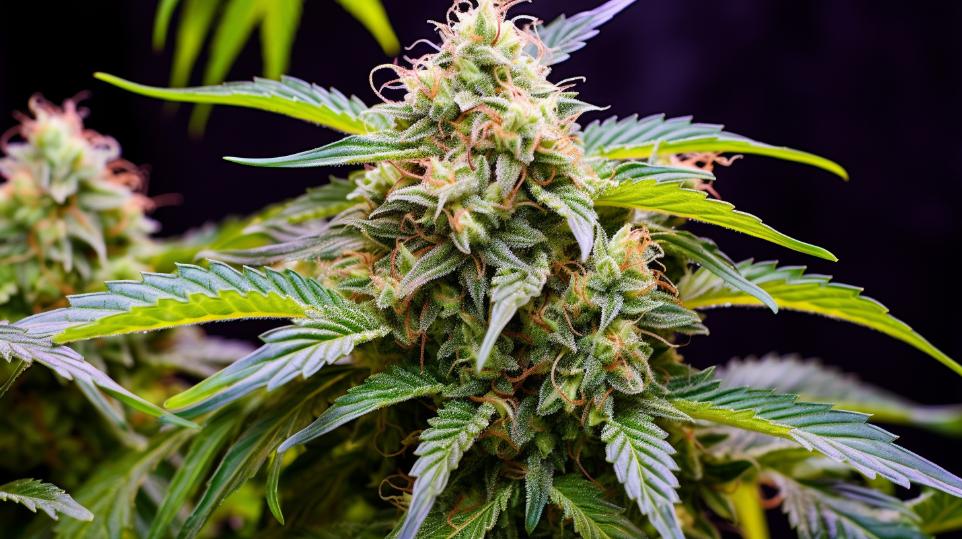
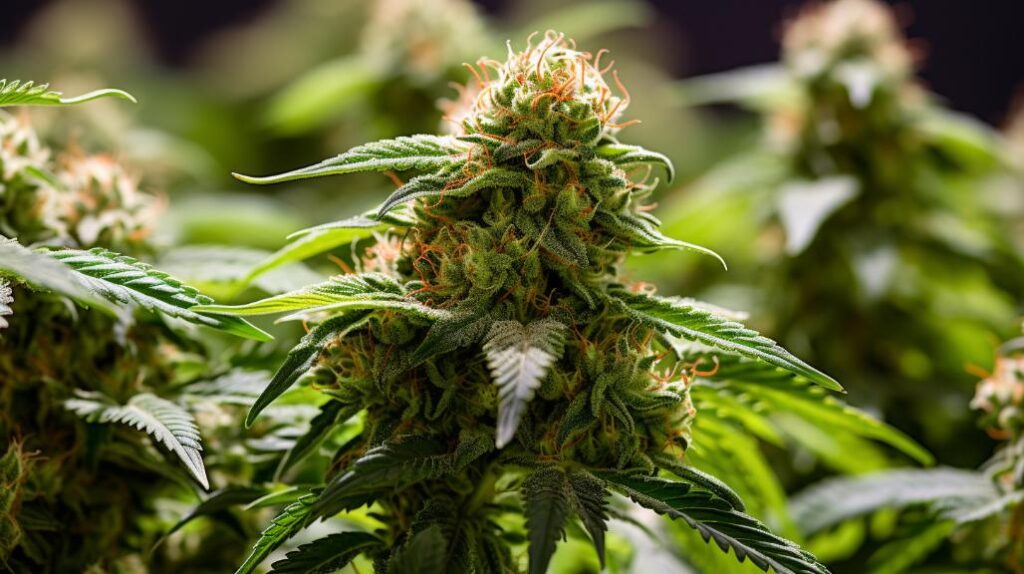
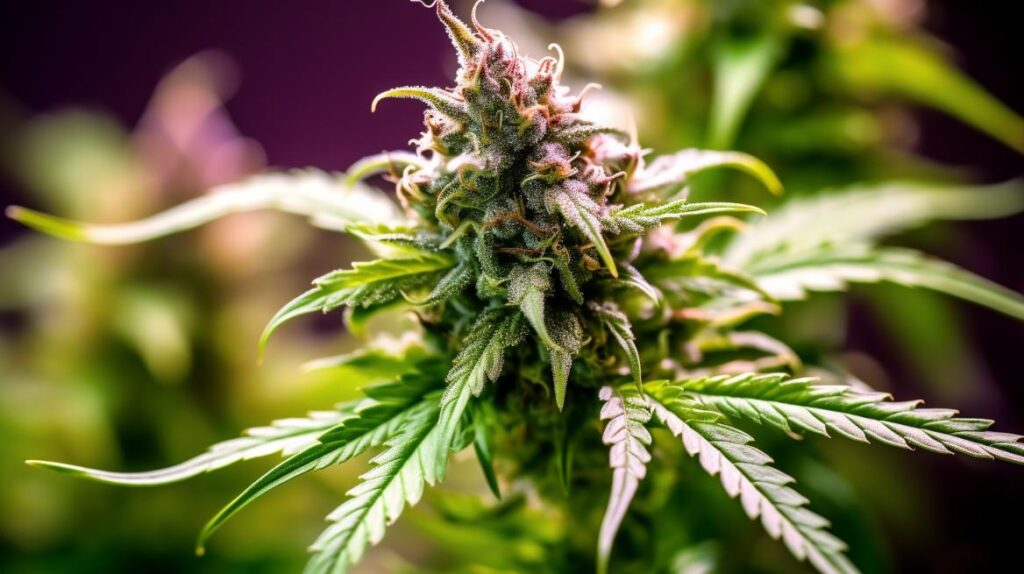
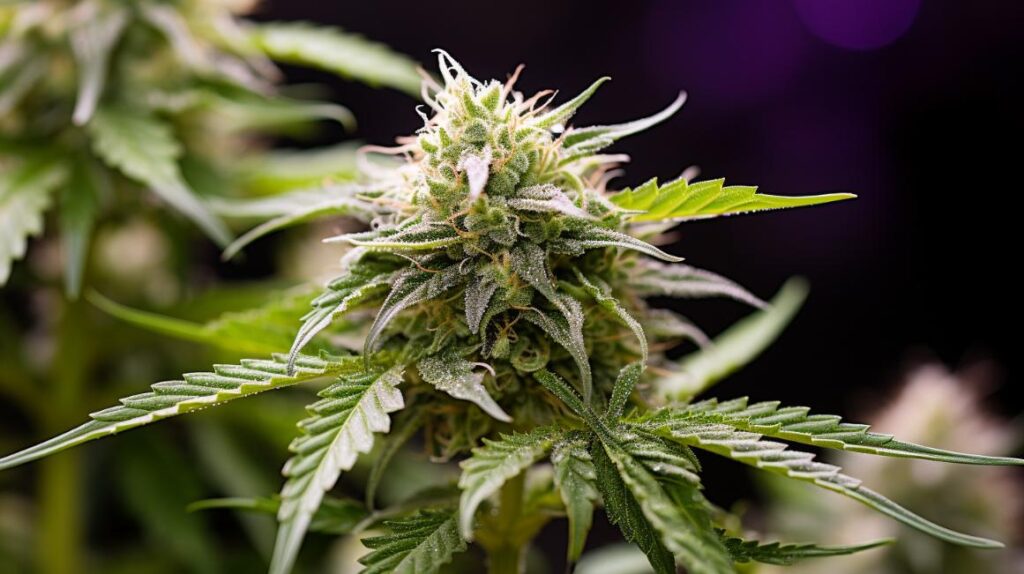
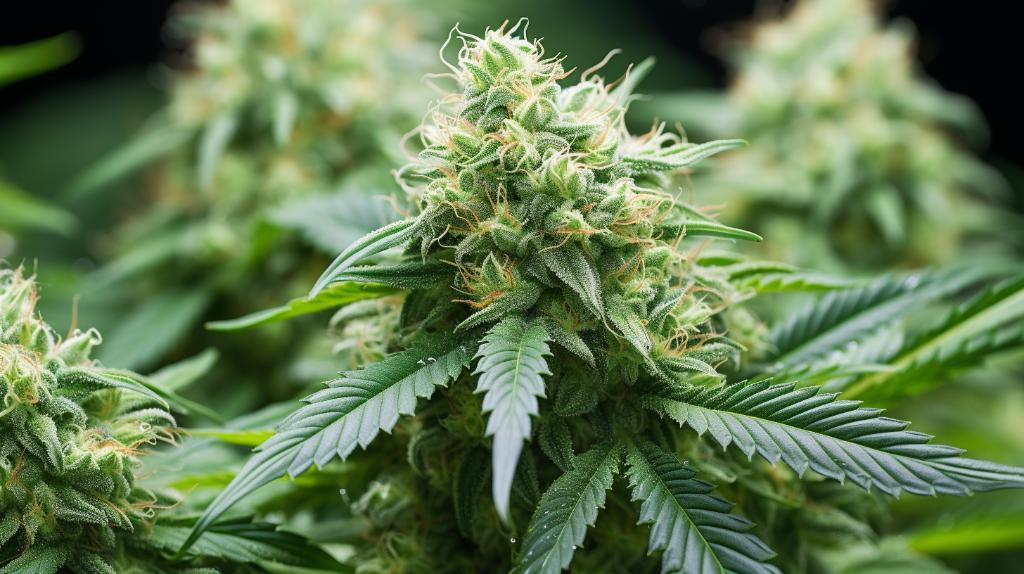

Responses